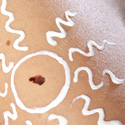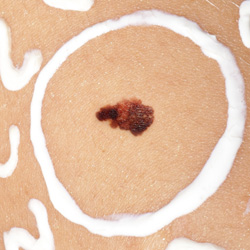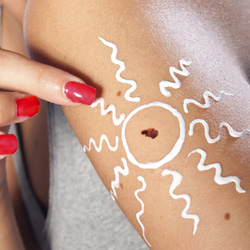
05 Jul Skin Cancer Facts
It’s important to know the facts about skin cancer. I hope this article will help you understand the seriousness of this disease and encourage you to take steps to protect yourself and your family from skin cancer.

Skin cancer is curable if detected early enough and has not spread. If you notice any changes in your skin, be sure to check with your dermatologist.
- Skin cancer is the most common form of cancer in the US. More than 3.5 million skin cancers in more than 2 million people are diagnosed annually
- One in 5 Americans will develop skin cancer in their life.
- Forty-percent to 50% of Americans who live to age 65 years will have nonmelanoma skin cancer at least once.
- One person dies of melanoma every hour.
- One in 55 people will be diagnosed with melanoma in their lifetime.
- Melanoma is the fifth most common cancer for males and the sixth most common in females.
- The majority of people diagnosed with melanoma are white men older than 50 years of age.
- Five percent of all cancers in men are melanomas; 4% of all cancers in women are melanoma.
- Millimeter for millimeter melanoma is the deadliest cancer in humans.
- Melanoma is curable if detected early enough and has not spread. Once melanoma has spread outside the skin, there are no acceptable treatments that offer a full cure.
So What Can You Do To Protect Yourself from Skin Cancer?
Protecting yourself and your family from skin cancer is a 2-part process:
1) Take steps to protect your skin from unhealthy exposure to the sun.
2) Catch any skin problems early before they can turn into untreatable cancer.

Protecting yourself and your family from skin cancer is a 2-part process: protection and early detection.
1. Protect your Skin. Keep out of the sun by seeking shade under trees, or create your own shade with a hat, shirt, or umbrella. Wear clothing that protects normally exposed skin: long sleeves, wide brimmed hats, etc. Be aware that fabric that is wet or has a loose weave will allow more light through to the skin. It’s also a good idea to avoid being out between 11 am and 4 pm when the sun is at its strongest.
2. Beware of clouds. Up to 80% of the sun’s rays can get through light clouds, mist and fog. Just because it’s cloudy out, doesn’t mean you can’t get burned.
3. Remember about Reflection. Water, sand, snow and concrete can reflect up to 80% of the sun’s damaging rays. You might be in the shade, but if you are out on the water, in the snow, etc., take extra precautions knowing rays are reflecting up from below.
4. Sunscreen. Sunscreen. Sunscreen. Use sunscreens with an SPF of 15 or more that contain both UVA and UVB protection. Apply sunscreen 15-30 minutes before going outside, and reapply every 2 hours (more often when working, playing, or swimming).
5. Avoid tanning salons and sunlamps. Artificial tanning lights emit mostly UVA radiation – up to 2-5 times as much as natural sunlight. UVA radiation causes sunburn, premature aging of the skin and skin cancer.
6. Protect Children. The most harmful effects of sun exposure occur during early childhood. Keep babies under 1 year out of direct sunlight. Once infants turn 6 months of age, begin using a sunscreen for added protection. It’s important to protect your child’s eyes by using plastic lens sunglasses that protect against UVA and UVB rays. Children should have arms and legs covered when out in the sun. Instead of wearing baseball caps, they should wear hats with a wide brim, which provides more sun protection. When children are playing in the water, make sure to use waterproof sunscreen.
7. Keep an Eye On Your Moles. Examine your moles and freckles monthly for any changes. See your health care provider immediately if you notice:
- a mole or discolouration that appears suddenly or begins to change
- a sore that does not heal
- areas of skin that are red and bumpy, bleed or are itchy
If you have a suspicious mole, don’t wait. Get it checked out by a qualified dermatologist. Click here to request a consultation today!

